Module 11 Body language Unit 3 Language in use课件20张
文档属性
| 名称 | Module 11 Body language Unit 3 Language in use课件20张 | 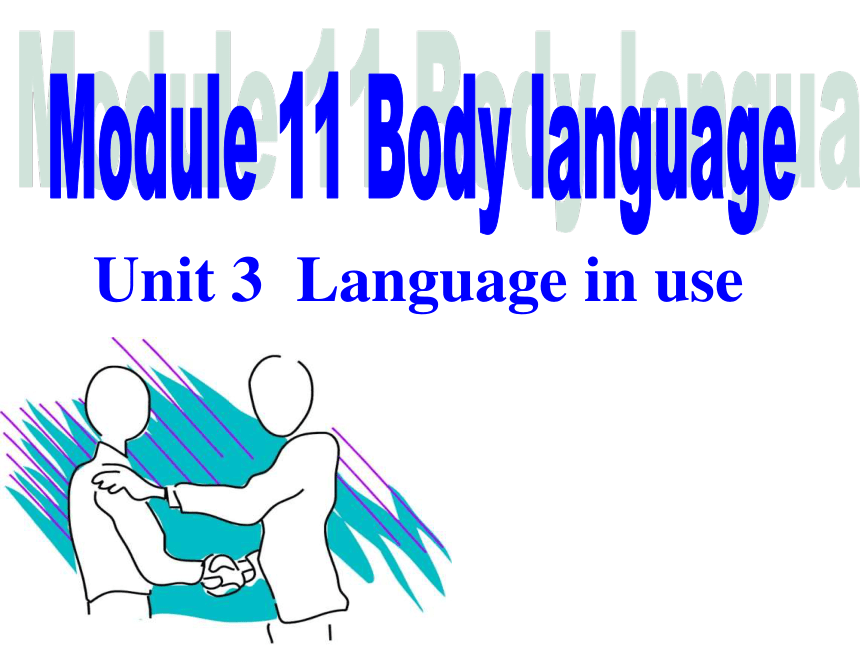 | |
| 格式 | zip | ||
| 文件大小 | 4.5MB | ||
| 资源类型 | 教案 | ||
| 版本资源 | 外研版 | ||
| 科目 | 英语 | ||
| 更新时间 | 2019-03-25 19:36:28 | ||
图片预览

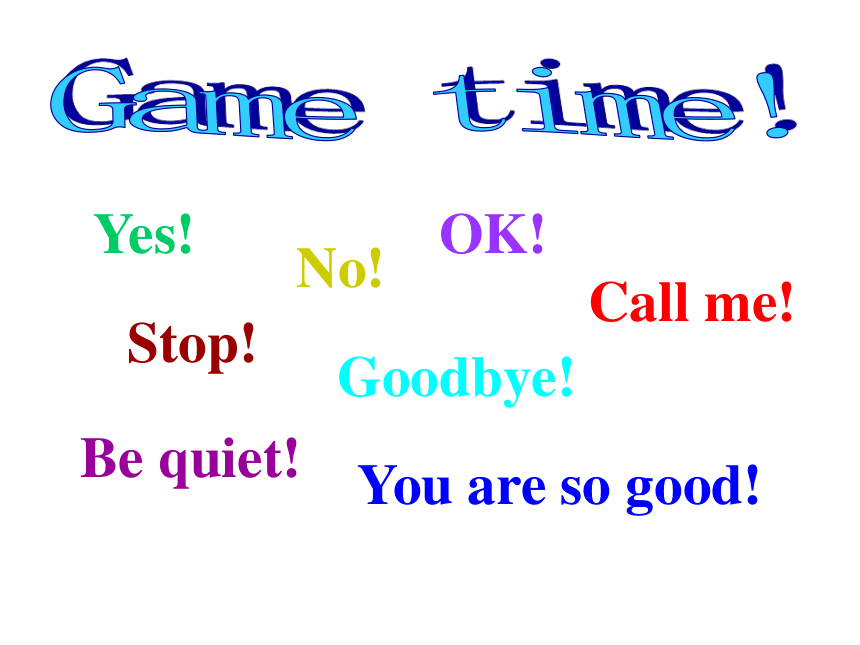
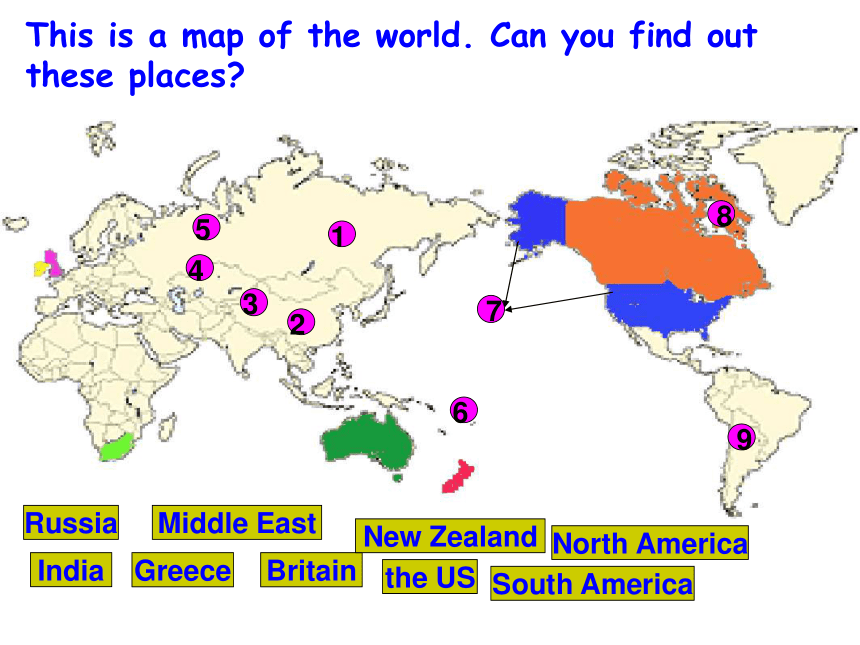
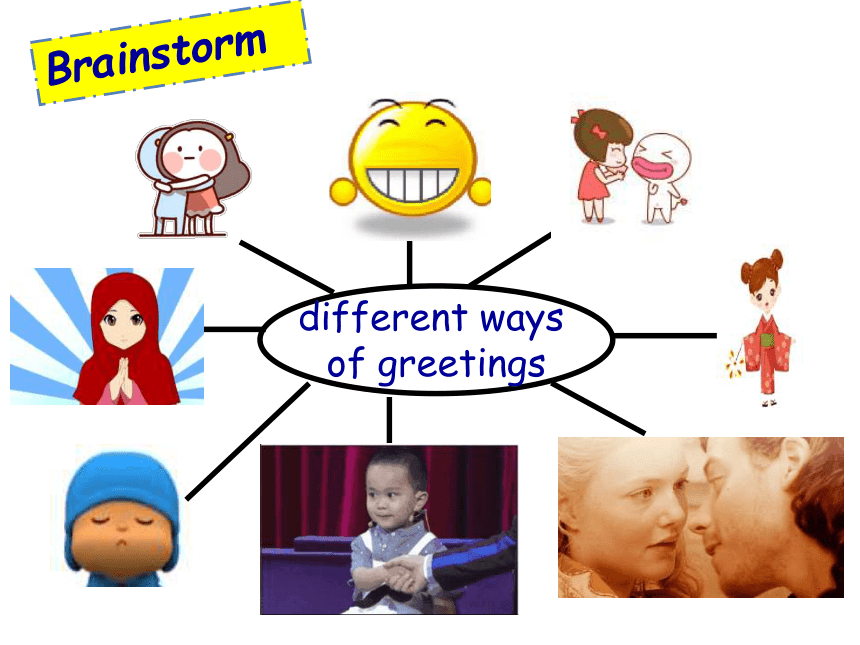


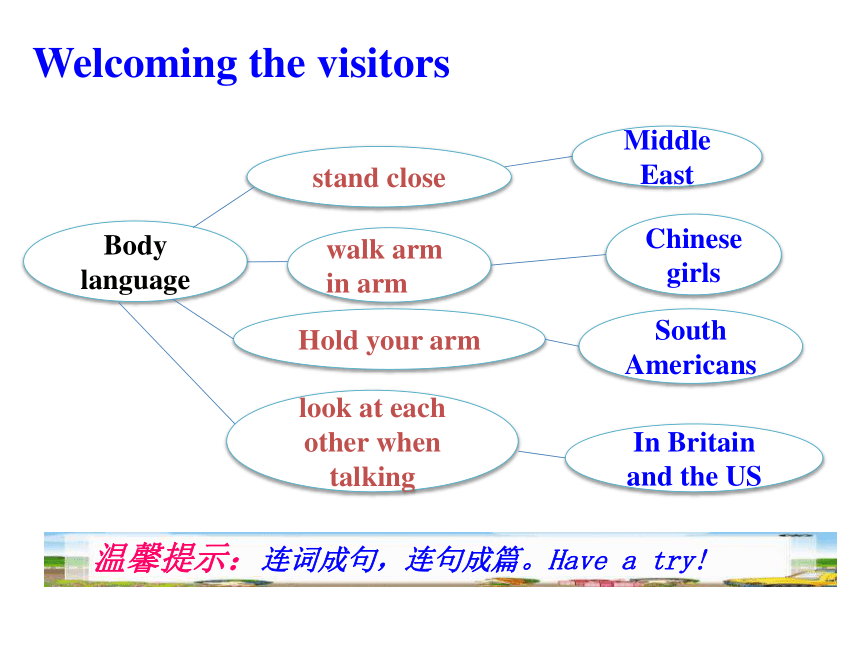
文档简介
Unit 3 Language in use
Yes!
No!
OK!
Stop!
Goodbye!
Call me!
Be quiet!
You are so good!
This is a map of the world. Can you find out these places?
Russia
India
Middle East
Greece
Britain
New Zealand
the US
North America
South America
1
2
3
4
5
6
7
8
9
different ways
of greetings
Brainstorm
Listen and fill in the blanks.
In China, people usually 1. ________ hands to greet each other.
In New Zealand, Maori people even touch
2. ________ .
In the US, it’s 3. ________ to look at each other when people talk.
4. ________ people bow to say “goodbye”.
In Britain, people may not 5. ________ arm in arm in the street.
shake
noses
polite
Japanese
walk
Pair work
Suppose there are many visitors visiting the UN(联合国)now. What will happen? Make a dialogue with your partner.
A: Hello! Are you…?
B: No, I’m…
A: What do people in…usually do
when they meet?
B: In…they… What about you?
A: I’m from…
B: Do people in your country…
A: Yes, they…/No, they…
Russia
China
America
India
Japan
New Zealand
In Britain and the US
South Americans
walk arm in arm
Hold your arm
Chinese girls
Middle East
look at each other when talking
Body language
stand close
温馨提示:连词成句,连句成篇。Have a try!
Welcoming the visitors
Enjoy reading.
We are Chinese, so we can speak Chinese. At school, now we are learning English, so we can speak Chinese and English.
Do you know other languages? Maybe you can say “We know German, Russian, Japanese…”. But there is a kind of special language. Do you know?
We have two kinds of languages—spoken language and body language.
If you observe carefully, you will notice that some of the body languages share the same meaning in different cultures. For example, nodding heads means “yes” while shaking heads means “no”, but at the same time, different cultures use different ways to show their friendliness. For example, in China, we shake hands when we meet a person
for the first time, but Japanese bow and most people from Western countries hug each other. Besides, there are still many body language, so knowing about these would be helpful for us to communicate with people from other nations.
Questions
The special kind of language in the second
paragraph refers to________.
Chinese B. body language C. English D. French
2. In the passage, “observe” means “______” in Chinese.
A. 了解 B. 观察 C. 庆祝 D. 遵守
3. In fact, there are two kinds of languages. They are______.
Chinese and English B. Russian and Japanese
C. Chinese and German D. spoken language and body language
4. In most western countries, people ________ when they meet someone for the first time.
bow B. shake hands
C. nod their heads D. hug each other
5. According to the passage we know that ______.
in our school we only learn English
shaking hands means “yes” in the world
C. in China, we only smile when we meet a person for the first time
D. knowing many different cultures would be helpful for us to communicate
Talk about do’s and don’ts in a foreign country.
Do’s Don’ts
Britain ◆ Stand in line.
◆ Shake hands.
◆ Say “please” and “thank you”.
◆ Open doors for others.
◆ Look at people when you talk.
◆ Be on time.
● Touch people.
● Ask a woman’s age.
● Stand too close.
● Say anything too personal.
Don’t be late for school!
Two minutes! Time is flying!
Read in the classroom.
Hours
Minutes
Seconds
Writing
“没有规矩,不成方圆”,作为一名学生,你了解你校的校规吗?请你以主人翁的态度,向即将踏入初中的新生介绍一些我们学校的规章制度。
1. 不准在校园内骑自行车。
2. 进入教学楼不准大声讲话。
3. 禁止带手机进入校园。
4. 不允许在教室里吃东西。
What can you learn from this lesson?
Write a passage about your school rules.
Search for more information about body language around the world.
A smile is the most beautiful language
in the world! 微笑是世上最美的语言。
Yes!
No!
OK!
Stop!
Goodbye!
Call me!
Be quiet!
You are so good!
This is a map of the world. Can you find out these places?
Russia
India
Middle East
Greece
Britain
New Zealand
the US
North America
South America
1
2
3
4
5
6
7
8
9
different ways
of greetings
Brainstorm
Listen and fill in the blanks.
In China, people usually 1. ________ hands to greet each other.
In New Zealand, Maori people even touch
2. ________ .
In the US, it’s 3. ________ to look at each other when people talk.
4. ________ people bow to say “goodbye”.
In Britain, people may not 5. ________ arm in arm in the street.
shake
noses
polite
Japanese
walk
Pair work
Suppose there are many visitors visiting the UN(联合国)now. What will happen? Make a dialogue with your partner.
A: Hello! Are you…?
B: No, I’m…
A: What do people in…usually do
when they meet?
B: In…they… What about you?
A: I’m from…
B: Do people in your country…
A: Yes, they…/No, they…
Russia
China
America
India
Japan
New Zealand
In Britain and the US
South Americans
walk arm in arm
Hold your arm
Chinese girls
Middle East
look at each other when talking
Body language
stand close
温馨提示:连词成句,连句成篇。Have a try!
Welcoming the visitors
Enjoy reading.
We are Chinese, so we can speak Chinese. At school, now we are learning English, so we can speak Chinese and English.
Do you know other languages? Maybe you can say “We know German, Russian, Japanese…”. But there is a kind of special language. Do you know?
We have two kinds of languages—spoken language and body language.
If you observe carefully, you will notice that some of the body languages share the same meaning in different cultures. For example, nodding heads means “yes” while shaking heads means “no”, but at the same time, different cultures use different ways to show their friendliness. For example, in China, we shake hands when we meet a person
for the first time, but Japanese bow and most people from Western countries hug each other. Besides, there are still many body language, so knowing about these would be helpful for us to communicate with people from other nations.
Questions
The special kind of language in the second
paragraph refers to________.
Chinese B. body language C. English D. French
2. In the passage, “observe” means “______” in Chinese.
A. 了解 B. 观察 C. 庆祝 D. 遵守
3. In fact, there are two kinds of languages. They are______.
Chinese and English B. Russian and Japanese
C. Chinese and German D. spoken language and body language
4. In most western countries, people ________ when they meet someone for the first time.
bow B. shake hands
C. nod their heads D. hug each other
5. According to the passage we know that ______.
in our school we only learn English
shaking hands means “yes” in the world
C. in China, we only smile when we meet a person for the first time
D. knowing many different cultures would be helpful for us to communicate
Talk about do’s and don’ts in a foreign country.
Do’s Don’ts
Britain ◆ Stand in line.
◆ Shake hands.
◆ Say “please” and “thank you”.
◆ Open doors for others.
◆ Look at people when you talk.
◆ Be on time.
● Touch people.
● Ask a woman’s age.
● Stand too close.
● Say anything too personal.
Don’t be late for school!
Two minutes! Time is flying!
Read in the classroom.
Hours
Minutes
Seconds
Writing
“没有规矩,不成方圆”,作为一名学生,你了解你校的校规吗?请你以主人翁的态度,向即将踏入初中的新生介绍一些我们学校的规章制度。
1. 不准在校园内骑自行车。
2. 进入教学楼不准大声讲话。
3. 禁止带手机进入校园。
4. 不允许在教室里吃东西。
What can you learn from this lesson?
Write a passage about your school rules.
Search for more information about body language around the world.
A smile is the most beautiful language
in the world! 微笑是世上最美的语言。
同课章节目录
- Module 1 Lost and found
- Unit 1 Whose bag is this?
- Unit 2 Are they yours?
- Unit 3 Language in use
- Module 2 What can you do ?
- Unit 1 I can play the piano
- Unit 2 I can run really fast
- Unit 3 Language in use
- Module 3 Making plans
- Unit 1 What are you going to do at the weekends?
- Unit 2 We're going to cheer the players.
- Unit 3 Language in use
- Module 4 Life in the future
- Unit 1 Everyone will study at home
- Unit 2 Every family will have a small plane.
- Unit 3 Language in use
- Module 5 Shopping
- Unit 1 What can I do for you?
- Unit 2 You can buy everything on the Internet
- Unit 3 Language in use
- Module 6 Around town
- Unit 1 Could you tell me how to get to the Nationa
- Unit 2 The London Eye is on your right.
- Unit 3 Language in use
- Revision module A
- Module 7 My past life
- Unit 1 I was born in a small village.
- Unit 2 I was born in Quincy.
- Unit 3 Language in use
- Module 8 Story time
- Unit 1 Once upon a time….
- Unit 2 Goldilocks hurried out of the house.
- Unit 3 Language in use
- Module 9 Life history
- Unit 1 He left school and began work at the age of
- Unit 2 He decided to be an actor.
- Unit 3 Language in use
- Module 10 A holiday journey
- Unit 1 What did you do?
- Unit 2 This morning we took a walk.
- Unit 3 Language in use
- Module 11 Body language
- Unit 1 They touch noses!
- Unit 2 Here are some ways to welcome them.
- Unit 3 Language in use
- Module 12 Western music
- Unit 1 It's so beautiful!
- Unit 2 Vienna is the centre of European classical
- Unit 3 Language in use
- Revision module B
